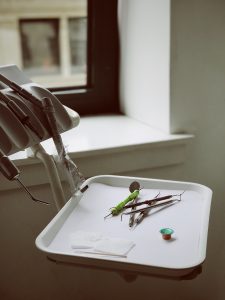The Effects of COVID-19 on Dental Practices
Coronavirus has had a huge effect on how we are living our daily lives, from many staying home as much as possible to wearing masks while out. Scientists have also said that life will continue to be different as we wait for the curve to flatten out across the country and for a possible vaccine or treatment for the virus. As the infection curve begins to drop, many governors are allowing certain businesses to open back up. What will this mean for your dental practice? Will things change and if so, how will they change?
During the time of Coronavirus, things will most definitely need to change in order to protect everyone and to limit the spread of the virus. Many scientists have agreed that there will most likely be a new “normal” even after we have flattened the curve. It may be some time before a real treatment or a vaccine will be discovered and until then, we will need to exercise caution in all types of settings. Some scientists think there could be a resurgence of COVID-19 in the fall. And this will mean that even after flattening the curve, there will need to be changes to how we live daily life, including how we receive medical and dental treatment.
Who Can be Treated
First, it is important to understand we have to stop or limit the spread of COVID-19 until a vaccine is found. We must all do our part, including using infection control procedures in dental facilities. Because of this, the Center for Disease Control (CDC) has recommended that during COVID-19, dental practices postpone elective procedures, surgeries and non-urgent dental visits and prioritize urgent and emergency visits. This recommendation also aligns with the recommendations from the American Dental Association (ADA), the American Dental Hygienists’ Association (ADHA) as well as the Centers for Medicare and Medicaid Services. In other words, all non-essential exams and procedures should be postponed until further notice. And by focusing on emergency dental visits in your office, you will also help alleviate the burden that dental emergencies would otherwise place on hospitals emergency departments.
How to Treat Emergency Dental Patients with Coronavirus
If you have an emergency patient with known or suspected COVID-19, dental providers should follow interim guidance from the CDC for both dental settings and healthcare settings to ensure the safety of you and your office staff. Some of these steps include using proper PPE such as eye protection, masks, gowns and gloves. It is also recommended that during aerosol-generating procedures that your mask be an N95 respirator. All PPE should be thrown out after each patient visit, donning new PPE for every patient you see in your office. If you cannot follow this guidance, the CDC recommends that you work with colleagues and other medical providers to determine the appropriate facility for treatment. The urgency and need for a procedure should be based on your clinical judgement and made on a case-by-case basis.
Keeping Your Clinic Clean
Keeping things in your clinic sterile and clean has probably always been a priority for you, however, it is of even more importance now. In order to limit the spread of Coronavirus, it is recommended that you implement a heavier disinfecting protocol in your clinic. This means that you should disinfect all surfaces in your examination rooms before a new patient enters. These surfaces should include but not be limited to: the dental chair, dental lights, countertops and drawer handles. It is also recommended that you cover some equipment with protective covers that are replaced after each cleaning of the exam room. Be sure that you and your staff also thoroughly disinfect all non-disposable tools between each patient. Before seeing a patient and putting on a new pair of gloves, your whole team needs to wash their hands thoroughly as well.
Don’t forget to disinfect any areas in your lobby that your patients may have come into contact with, such as the reception desk and door handles. Only have one patient in your office at a time and the patient should come by themselves. If they need a ride home after a procedure, their driver should wait outside.
Keeping Your Employees Safe
Not only do you want to ensure that your patients are safe, but your employees as well. If an employee suspects they have Coronavirus or has come into contact with someone with a known case, do not allow them to come into the office for two weeks. If they are not showing any symptoms after two weeks, it should be safe for them to come back to work. Remember that there can be asymptomatic carriers of the virus so you and your dental staff should practice social distancing as much as possible and wear masks when needed, even when there isn’t a patient in the office. Also, follow guidance from the CDC and the Occupational Safety and Health Administration (OSHA) to keep you and your employees safe.
In the Future: After the Curve Flattens
No one really knows what to expect in the future, other than that things will have to change until a vaccine is found. Many are referring to this as a “new normal.” At some point, you should be able to start seeing patients for non-emergency procedures and check-ups. You will need to continue to heavily clean and disinfect your clinic and it may be that you will only be able to have one patient at a time in your office. Now and in the future, you will need to continue to follow the guidance of the ADA, ADHA, CDC and OSHA to protect you, your staff and your patients. Remember, we are all in this together and must all do our part to help limit and stop the spread of COVID-19.



